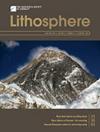Exploring the Influence of Seismic Source and Improvement Methods on Tunnel Seismic Prediction
IF 1.8
4区 地球科学
Q3 GEOCHEMISTRY & GEOPHYSICS
引用次数: 0
Abstract
Tunnel seismic advanced prediction method is essential for detecting abnormal bodies ahead of the tunnel face and minimizing risks during tunnel construction. Selecting the seismic source plays a crucial role in influencing the precision and effectiveness of data acquisition. At present, tunnel seismic data is usually collected using explosive and sledgehammer sources. Nevertheless, the various sources are located in different positions within the tunnel excavation zone, resulting in distinct characteristics observed on the surface and reflected waves in the acquired tunnel seismic data. The explosive source has minimal surface wave interference, but it is expensive. However, the sledgehammer source is economical yet plagued by inadequate energy and substantial surface wave disruption. Regrettably, there is a lack of research on seismic sources in tunnels, which impairs the precise interpretation of forecasting conclusions from these sources. This paper seeks to investigate how various sources impact tunnel seismic prediction and suggests a new method that integrates data acquisition and processing from these sources. The explosive source is used once, while the sledgehammer source is used 24 times. Cross-correlation calculations are conducted to enhance the resolution of sledgehammer source data, reducing surface wave interference, based on seismic data obtained from the explosive source. Extensive numerical simulations and tunnel experiments support the validity of this method, highlighting its potential to lower data acquisition expenses and enhance tunnel seismic prediction accuracy.探讨震源和改进方法对隧道地震预测的影响
隧道地震超前预测方法对于探测隧道工作面前方的异常体和最大限度地降低隧道施工过程中的风险至关重要。震源的选择对数据采集的精度和效果起着至关重要的作用。目前,隧道地震数据的采集通常使用爆炸震源和大锤震源。然而,各种震源在隧道开挖区域内的位置不同,导致采集到的隧道地震数据在表面波和反射波上具有不同的特征。炸药震源对地表波的干扰最小,但价格昂贵。然而,大锤震源虽然经济实惠,却存在能量不足和大量面波干扰的问题。遗憾的是,对隧道地震震源的研究不足,这影响了对这些震源预测结论的精确解释。本文试图研究各种震源对隧道地震预测的影响,并提出了一种整合这些震源的数据采集和处理的新方法。炸药震源使用一次,大锤震源使用 24 次。根据从爆炸震源获得的地震数据,进行了交叉相关计算,以提高大锤震源数据的分辨率,减少面波干扰。大量的数值模拟和隧道实验证明了这一方法的有效性,凸显了其在降低数据采集成本和提高隧道地震预测精度方面的潜力。
本文章由计算机程序翻译,如有差异,请以英文原文为准。
求助全文
约1分钟内获得全文
求助全文
来源期刊

Lithosphere
GEOCHEMISTRY & GEOPHYSICS-GEOLOGY
CiteScore
3.80
自引率
16.70%
发文量
284
审稿时长
>12 weeks
期刊介绍:
The open access journal will have an expanded scope covering research in all areas of earth, planetary, and environmental sciences, providing a unique publishing choice for authors in the geoscience community.
 求助内容:
求助内容: 应助结果提醒方式:
应助结果提醒方式:


